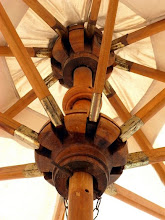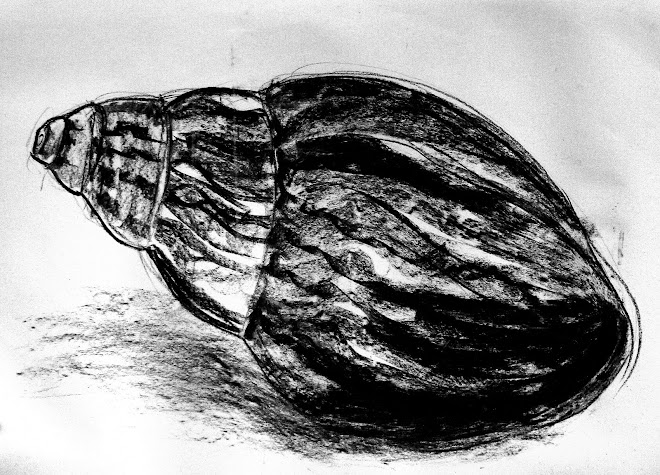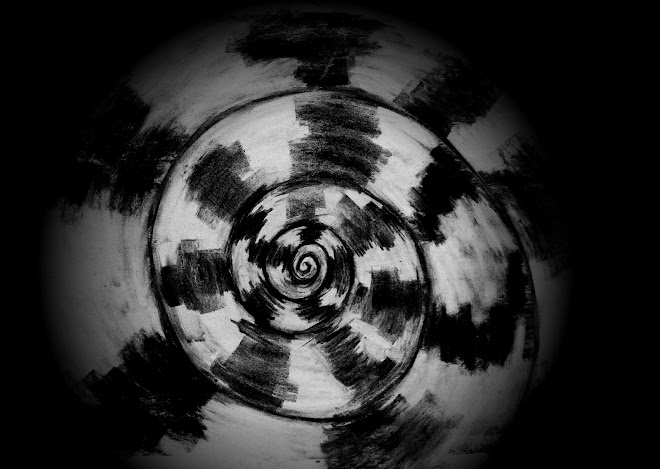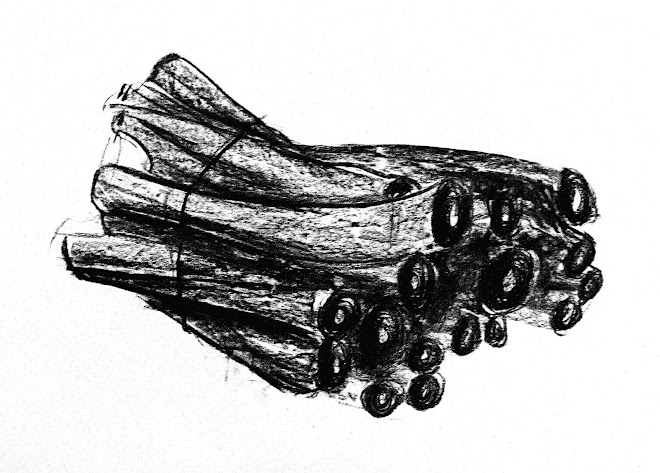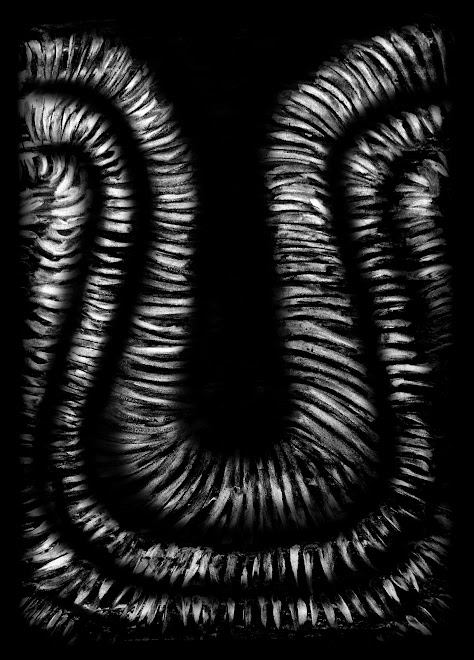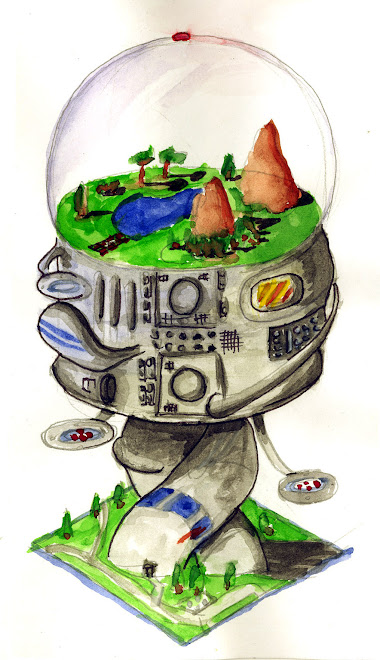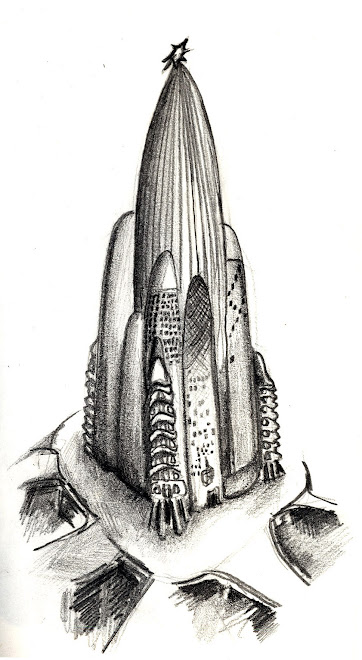This is a reminder that all photography relating to this blog can be viewed by clicking on the slideshow in the upper-right hand corner of the blog. This will take you to a Google Picasa web album with all the relevant photos.
Tuesday, 20 May 2008
Photography
This is a reminder that all photography relating to this blog can be viewed by clicking on the slideshow in the upper-right hand corner of the blog. This will take you to a Google Picasa web album with all the relevant photos.
Friday, 16 May 2008
Final Outcome

Pictured above is my final outcome for this unit of work, a large plaster sculpture from a ring shaped mould. I have incorporated elements derived from various stages of my studies so far. I have tried to create a sculpture that satisfies a completeness of form, this idea came from looking at the sructures of Richard Deacon. I have created balance by placing the central hole slightly off centre. I have paid careful attention to the edges and curves of the sculptue, which were inpired primarily from my studies of a banana. The piece is also heavily influenced by the work of Gaudi and his chimnies. Overall I think this has been a successful outcome. would have liked to have achieved a slightly smoother surface on the sculpture but the plaster I used is currently too wet for me to do so. For presentation purposes the sculpture will be placed on-end on plaster plinth.
Thursday, 15 May 2008
Experimental Sculpture




In preparation for my final piece I experimented with clay and plaster to get used to the materials and the forms that would be possible. Pictured above is an example of what I came up with; a small sculpture inspired by my Gorillapod.
I have also included my first attempt at plaster sculpting; a simple form with smoothed surfaces and a crease. Also pictured is an idea for a sculptural piece (the end of a banana) inspired by my earlier observations of cocoa beans.
I discovered that using this 'hands on' approach gave me a good feel for the materials and helped to create organic forms.
Wednesday, 14 May 2008
Antoni Gaudi



The architect Gaudi, often designed with natural forms in mind. He was particularly interested in curves found in nature and sought to express them in his work. I have pictured some of his chimneys because of the surface quality, It is reminiscent of water or a bone structure beneath a skin. I have also pictured the curves of the 'Casa Mila' to show that Gaudi was prepared to use his natural forms on a large scale. I have also included an interior heavily inspired by parabolae; undoubtedly observed in nature.
Tuesday, 13 May 2008
Barbara Hepworth

Barbara Hepworth is a British sculptor who works with bronze and plaster. She often creates spherical forms with complex sculpted interiors, sometimes using wire strands to connect elements in the sculpture. Like Deacon; line and surface seem to be very important factors in her work. I enjoy he pictured oval sculpture because it satisfies a curiosity to look within a solid object (the boundary of which is indicated by the dark shell), and imagine what might exist therein. I like the edge quality she has achieved and the seamless transition of curves.
Richard Deacon



Richard Deacon is a British sculptor who has created a variety of works that appeal to me and link to my topic, pictured are; "Blind, Deaf and Dumb A", "Under My Skin" and "Keeping the Faith".
Deacon often creates very fluid, well balanced forms. He uses curved surfaces in almost all of his sculptures and carefully expresses linear qualities. When I look at his sculptures I feel that he is trying to satisfy a craving for completeness of form. His sculptures contain surfaces and lines that have no end point. All elements of the sculpture tend to loop round seamlessly back onto themselves. To me, this completeness of form makes the work seem very separate from its surroundings, helping it to really stand out.
Some of his other work seems to imply large, hidden forms. It is as if he has just chosen to show part of what is there. He will not, however, just highlight an arbitrary intersection or cross-section, instead he will take a continuous loop or polar-segment, to convey completeness.
Whilst his work is often very organic, it is sometimes hard to deduce, from what has Deacon taken his inspiration. Some of his sculptures look like transluscent cellular organisms, others remid me of paths of objects through space. I think his bent, wooden sculptures are heavily inspired by natural form, evoking fruit, plants and body parts.
Monday, 5 May 2008
Peter Randall-Page

Peter Randell-Page is a sculptor who creates forms influenced by, and based on nature. I like his observations of patterns in nature and admire his ruthlessness and fidelity to form. I have included a copy of one of his untitled drawings. The example shown is a very indulgent drawing. The form is tightly coiled, closely framed and is satisfying to look at. There is also an element of mystery as the form appears to be emerging from a dark abyss.
Wednesday, 30 April 2008
Coral Patterns
Sunday, 27 April 2008
Observation - Photography




I have taken may photographs from a wide range of sources. Wherever I look, I can find a wealth of design that has been inspired by natural form. Consequently, most of my photos were taken in nearby areas such as the University of Reading and my own house. I also aquired a large batch of photos (and inspiration) from a holiday to Marsa Alam, Egypt. I found inspiration in the corals of the red sea, from ancient columns in the Karnak temple of Luxor and in the Islamic architecture all around me. Above, I have featured some of my favourite photos. All of the photos can be viewed in the slideshow in the top-right hand corner of this blog or by visiting my picasa web album.
Observation


After looking at purely natural forms, I have turned my attention to objects that have been inspired by natural forms.
I started by looking at objects around me that I used in everyday life. I drew my tripod because its flexible legs were probably inspired by those of some king of insect of plant.
I observed a camera lens and made an experimental line drawing considering some of the connotations of cameras and photographs. The inspiration here is from the human eye and the shifting of lenses.
I looked at a swing ball corkscrew and made a rhythmic fine line and watercolour drawing to emphasise the spiralling corkscrew. The influence for this design may be the path of a falling seed as it spirals to the ground.
I also found some wash balls which reminded me of small alien planets. I tried to convey their character using a collage of various pieces of plastic and paper. I also used watercolour, pen and talcum powder.
Observation


To start this project, I have decided to look at natural forms on their own as opposed to designs that are inspired by natural forms, this will come later. My first drawing was in charcoal; of a large shell from the art department. I observed a fairly simple outline that contained many complexities within. Firstly, there were the patterns on the shell, these varied at different points on the shell's coil. Then there was the coil itself, which spiralled into infinity. Finally, there were the complexities hidden within the shell which I have neglected for the sake of simplicity. I went on to draw the spiral from an end-on viewpoint.
Using this medium, I noticed a small bundle of charcoal on the table and drew these. I was interested by the way that these 'man made' objects had a distinctly organic feel; slightly curved and with a dark matte surface.
Sunday, 30 March 2008
about this blog...
In this blog I aim to explore and examine many objects that I believe have been inspired by, or contain a large element of natural form. I intend to look at natural forms themselves and at products and images which have been created with natural form specifically in mind. I will consider how these forms are conveyed and the degree to which they are 'inspired'. I will observe these forms around me and consider some very famous designs that have had natural form elements. I will experiment based on my observations using a range of media. This will culminate in a final outcome which will bring together the ideas I have acquired through my previous work.
I will post when encountering a specific event important to the development of the project, for example, mentioning artists and important sketches. The lower part of the blog will be filled with images and there will be slideshows with running reels of my work. There will be useful information down the side of the page including relevant links.
I will post when encountering a specific event important to the development of the project, for example, mentioning artists and important sketches. The lower part of the blog will be filled with images and there will be slideshows with running reels of my work. There will be useful information down the side of the page including relevant links.
Subscribe to:
Comments (Atom)



